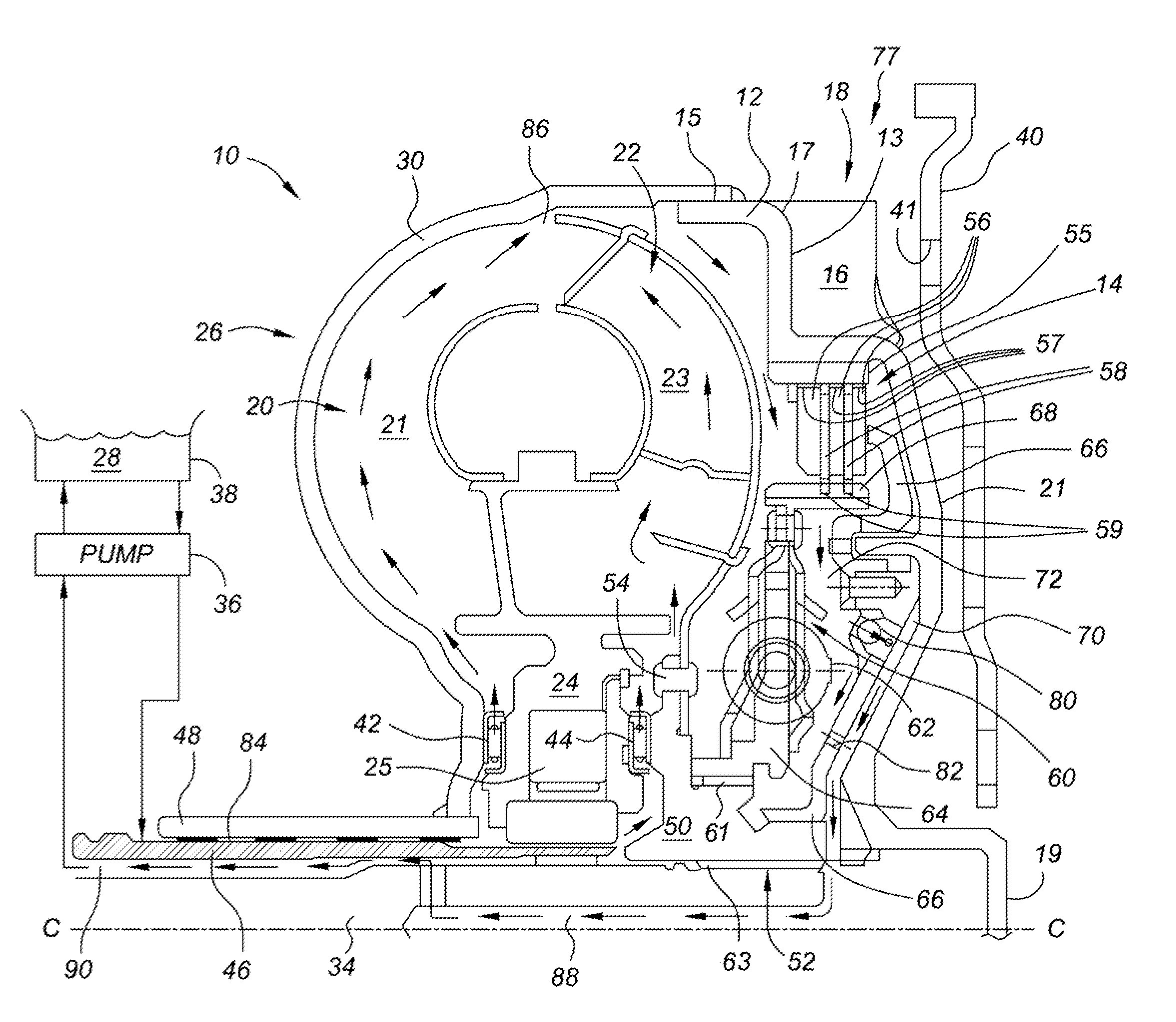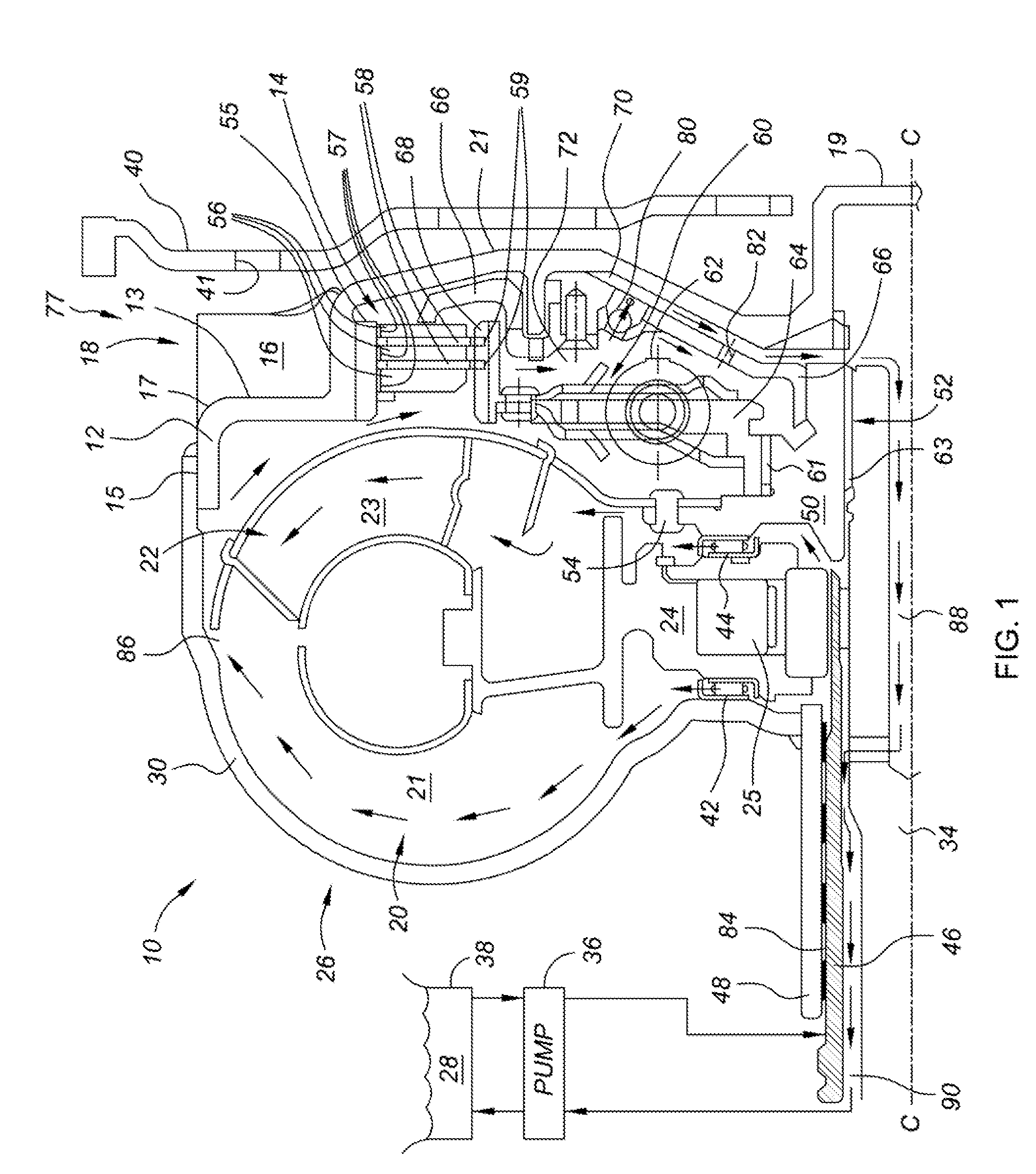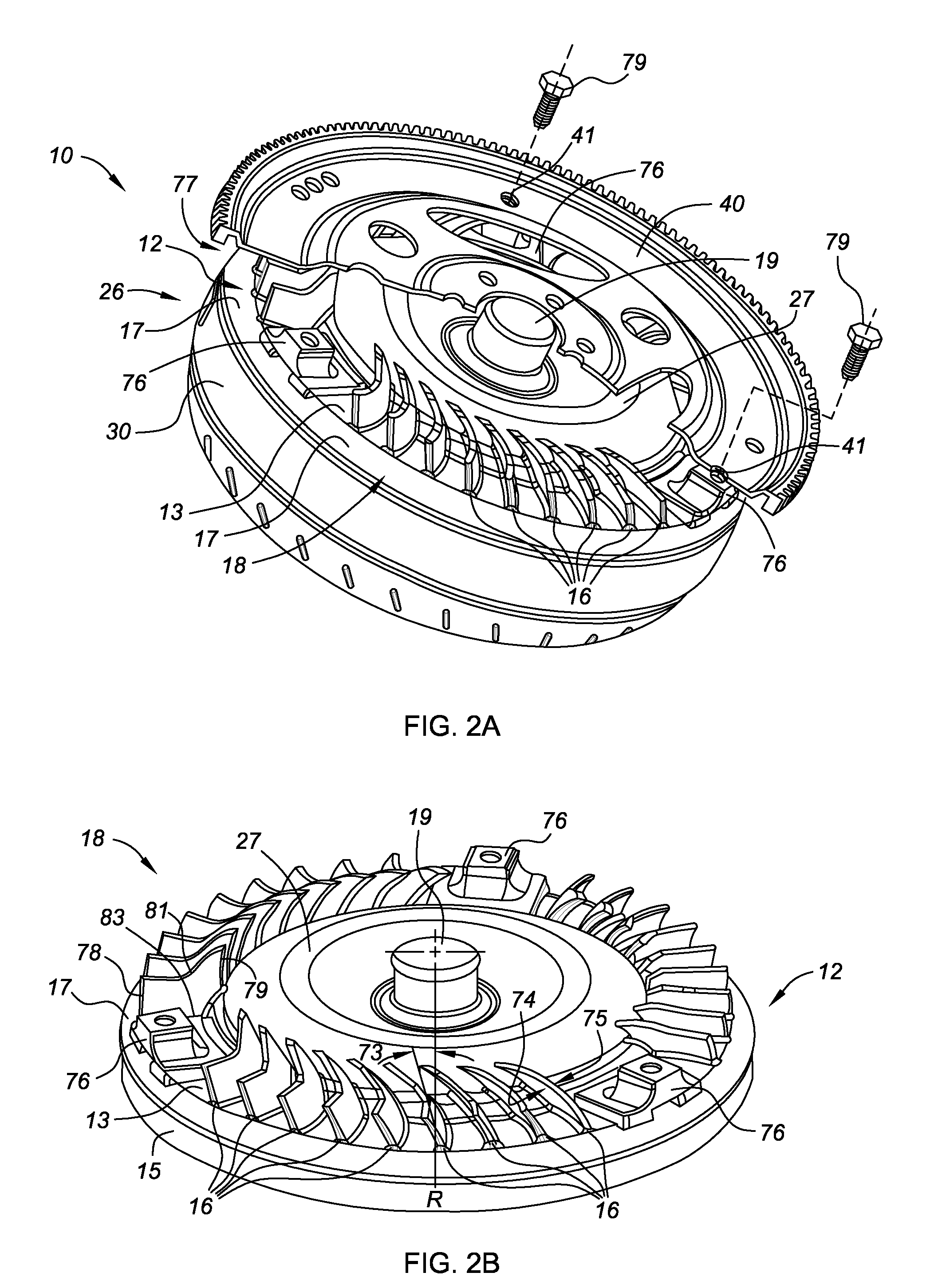Vane air-cooling system for automatic transmission torque converter
a technology of torque converter and cooling system, which is applied in the direction of machines/engines, liquid fuel engines, gearing, etc., can solve the problems of increasing cost, increasing vehicle weight, and fuel economy, and achieve the effect of increasing the convective dissipation of hea
- Summary
- Abstract
- Description
- Claims
- Application Information
AI Technical Summary
Benefits of technology
Problems solved by technology
Method used
Image
Examples
Embodiment Construction
[0027]Referring to the drawings, wherein like reference number refer to the same or similar components throughout the several views, FIG. 1 is a cross-sectional side-view of a portion of an exemplary hydrodynamic torque converter assembly, identified generally as 10, in accordance with the present invention. The torque converter assembly 10 is preferably adapted to be operatively positioned between a prime mover, such as an internal combustion engine (not shown), and an automatically shifted multi-speed power transmission (not shown.) The torque converter assembly 10 can also be incorporated into other types of vehicles (e.g., hybrid vehicles, electric vehicles, etc.) across various platforms (e.g., passenger car, light truck, heavy duty, and the like.)
[0028]The exemplary torque converter assembly 10 of FIG. 1 includes an electronically controlled converter clutch (hereinafter “ECCC”) 14, a torque converter pump or impeller 20, a bladed turbine 22, and a stator 24. The impeller 20 i...
PUM
 Login to View More
Login to View More Abstract
Description
Claims
Application Information
 Login to View More
Login to View More - R&D
- Intellectual Property
- Life Sciences
- Materials
- Tech Scout
- Unparalleled Data Quality
- Higher Quality Content
- 60% Fewer Hallucinations
Browse by: Latest US Patents, China's latest patents, Technical Efficacy Thesaurus, Application Domain, Technology Topic, Popular Technical Reports.
© 2025 PatSnap. All rights reserved.Legal|Privacy policy|Modern Slavery Act Transparency Statement|Sitemap|About US| Contact US: help@patsnap.com



